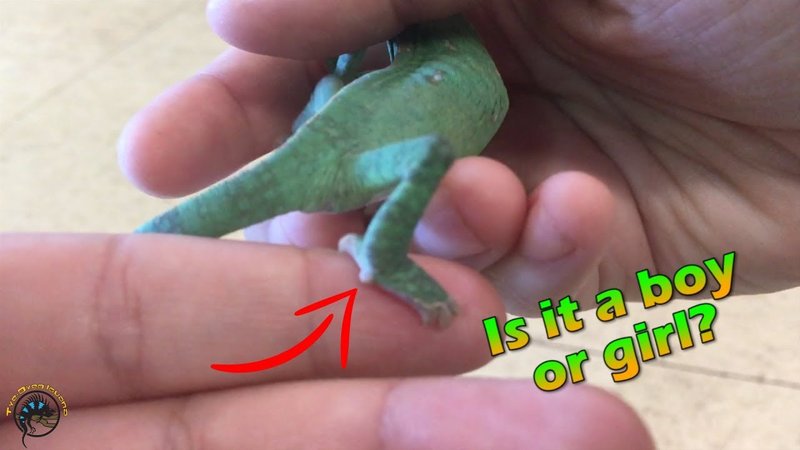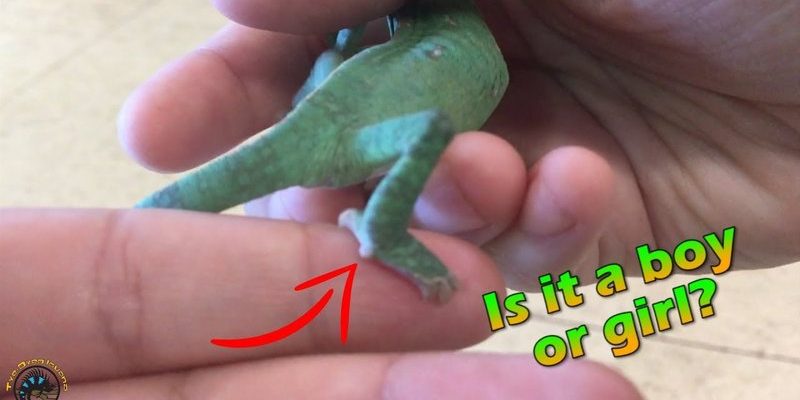
Picture it like sorting out your favorite bands—there are many different sounds, styles, and personalities. Just like you wouldn’t mix up your favorite singer with a backup guitarist, you don’t want to mix up male and female chameleons. Each has its own characteristics and needs, and knowing the difference helps you provide the best care possible.
So, let’s dive into the colorful world of flap-necked chameleons and explore how you can tell their gender. This isn’t just for fun; it’s essential for anyone who wants to be a responsible pet owner.
Understanding Flap-Necked Chameleons
Before we get into the nitty-gritty of gender identification, it helps to know a bit about these unique creatures. Flap-necked chameleons, or *Chamaeleo dilepis*, are native to parts of Africa. They’re known for their ability to change colors, which isn’t just about blending in; it’s also a way to communicate feelings and health status.
These chameleons have a distinct flap of skin under their throat, which they can puff out. This flap is more than just a pretty accessory; it plays a crucial role in their social interactions. The size and color can change based on whether they’re feeling threatened or trying to attract a mate.
If you’re thinking about adopting one, you should also be aware that the gender plays a significant role in their behavior and care. Males are typically more vibrant, while females might be a bit more subdued. Understanding these differences will be your first step.
Physical Differences: Size and Color
One of the most noticeable ways to determine the gender of a flap-necked chameleon is through their size and color. Generally, male flap-necked chameleons are larger and more colorful than their female counterparts.
– Males: They usually showcase vibrant greens, blues, and yellows. Their coloration can change dramatically based on their mood or environment.
– Females: On the other hand, females often have more muted colors like browns or tans. This isn’t just for style—it helps them camouflage better, especially when they are ready to lay eggs.
If you have two chameleons side by side, it should be fairly easy to spot the differences. But remember, stress and other factors can also affect their colors. So, keep an eye on their overall appearance rather than just a snapshot.
Analyzing Behavior: Males vs. Females
Behavior can also be a significant indicator when figuring out whether you have a male or female flap-necked chameleon. Males are typically more territorial and aggressive. They might display their colors to establish dominance or attract a mate. Here’s what to look for:
– Males: Look for them puffing out their flap, performing head-bobbing, or displaying a more active demeanor. They often engage in more physical displays when they feel challenged.
– Females: Generally, females are quieter and less active. They might be more prone to seeking shelter or hiding. If you notice your chameleon doesn’t seem to be very active, it could possibly be a female, especially if she looks a bit plump—indicating she could be carrying eggs.
Understanding these behaviors can help you not only identify the gender but also adjust your care routine based on their temperament and needs.
The Role of the Flap: Why It Matters
The flap beneath the neck, called the dewlap, is one of the most crucial features in identifying gender. Males typically have a more prominent and colorful flap that they use during courtship displays.
When the males puff out their dewlap, it’s not just for show. It’s a signal to other chameleons about their presence, health, and readiness to mate. In contrast, the female flap-necked chameleons usually have a smaller, less colorful dewlap. This difference is significant, especially during breeding season when males are more active and visible.
If you’re trying to identify your chameleon, pay attention to the dewlap. It’s like the calling card of their gender and provides insight into their reproductive status.
Other Signs to Look Out For
When determining the gender of your flap-necked chameleon, there are a few additional signs that can help. Sometimes, these signs can go unnoticed if you’re not familiar with what to look for. Here are a couple more features to consider:
1. Hemipenal Bulges: Male chameleons have visible hemipenal bulges near their vent, especially when they are relaxed. These bulges look like small bumps, and they can be a clear indicator of male chameleons. You might consider gently handling your chameleon to check for this, but make sure to be careful and minimize stress.
2. Size at Maturity: Generally, males can reach a larger size than females when fully grown. If you have a young chameleon and are trying to determine gender, keep in mind that males tend to grow a bit larger over time.
Recognizing these additional features can help build your confidence in identifying the gender of your flap-necked chameleon.
Consulting an Expert: When in Doubt
If you’re still unsure about your flap-necked chameleon’s gender, don’t hesitate to consult a reptile expert or a vet who specializes in exotic pets. They have the experience to provide you with an accurate assessment.
It’s easy to think you can figure it out on your own, but sometimes experts can spot subtle traits that you might miss. This is particularly important if you plan to breed your chameleons or if you have concerns about their health and wellbeing.
Having a professional’s insight can not only confirm your findings but also enhance your understanding of what specific care your chameleon needs based on its gender.
Understanding how to tell the gender of a flap-necked chameleon is more than just a fun fact; it’s essential for responsible pet ownership. Whether it’s their size, color, behavior, or those distinctive flaps, each aspect gives you a clue about who your chameleon is.
By knowing the differences, you can provide better care tailored to their needs, whether that’s creating a suitable habitat, understanding their social interactions, or preparing for breeding. So, take your time, observe, and enjoy the process of getting to know your flap-necked chameleon. It’s a unique journey that will enhance your experience as a pet owner.

